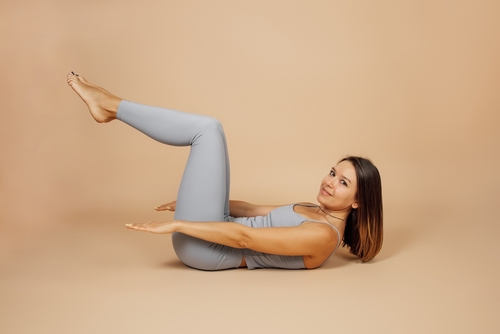
Joseph Pilates, after whom Pilates was named, called it a method of Contrology that was centred on six principles of movement which establishes and improves the quality of each exercise. These movements focus on one concept of Pilates at a time until it is habitual, and then move to the next until you’re able to perform all the movements simultaneously.
Although it’s quite common to see many confused pilates movements with Yoga poses, there is one important difference between the two of them. In a yoga class, you typically adopt a position and hold to it or convert it into different positions, whereas in Pilates movements you adopt a position and then challenge your core by moving either your arms or legs. Here is all you need to know about the 8 pilates movement principles.
Concentration
Concentration is a principle that promotes mind-body connection in a pilates movement. As you concentrate you improve focus and become mindful of how your body performs each movement. This allows you to receive optimum physical value from each pilates movement as well as enhance your body awareness.
Centring
Pilates movement requires you to consciously bring your focus to the centre of your body. This principle suggests you will bring calm to both your body and spirit. In Pilates, the centre of your torso is called the “powerhouse” from which all the energy you need for the exercise is derived.
Control
Pilates movements are comprehensively focused on mindfulness, which includes complete muscle control. Proper control allows you to utilise the exact and correct form, leaving no part of the body unattended or unused. Personal trainers believe that when you’re mindfully aware and controlled you can easily direct each and every movement without losing your balance.
Precision
According to pilates precision principles, executing and completing one exercise with deliberate exactitude is more effective than completing more repetitions with a sloppier form. A good personal trainer should therefore always be more focused on detailing instructions to students to get their movement precision right.
Breathing
Your blood circulation activates and awakens your cells and muscles with deep, controlled, and diaphragmatic breathing. It is recommended to visualise the lungs as bellows while you bring air into the fullest and release it the same way. It’s also said that breathing is the most integral part of Pilates movements.
Alignment
The pilates movement stresses mostly good posture and awareness of the placement of all parts of the body from head to toe. So it’s important to be aware of the position of your head, neck, spine and pelvis to ensure proper breathing and technique.
Flow
Pilates routines are completed through a gentle flow. Grace, ease, and fluidity are the core intentions of Pilates movements. Continuous, smooth, and elegant movement as you switch from one form to another is said to enhance strength and stamina according to the principle of “Flow”.
Integration
Breath, control, mindfulness, centring, alignment, and precision are some key elements that should essentially be integrated with your body muscles for them to support and govern the movement.
Only when practising the above principles, the goal of Pilates movements which is an integrated mind-body workout will be achieved.




